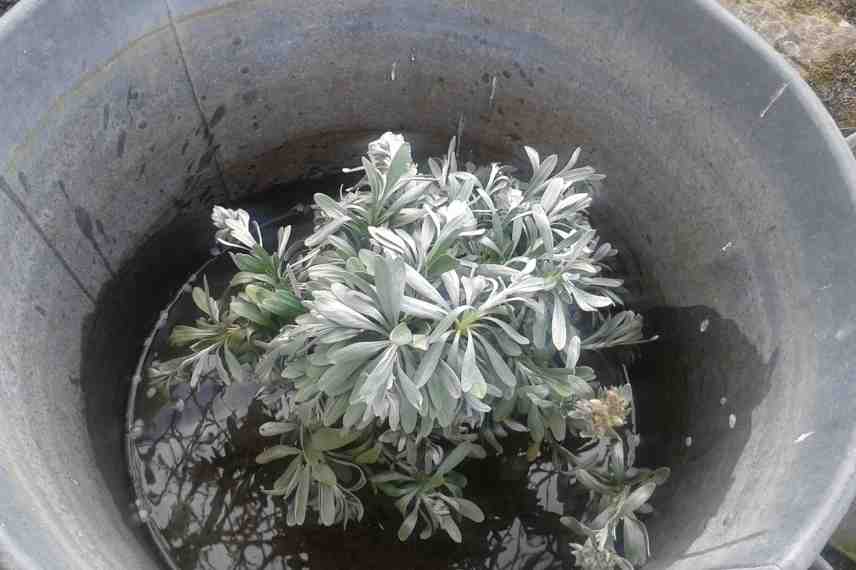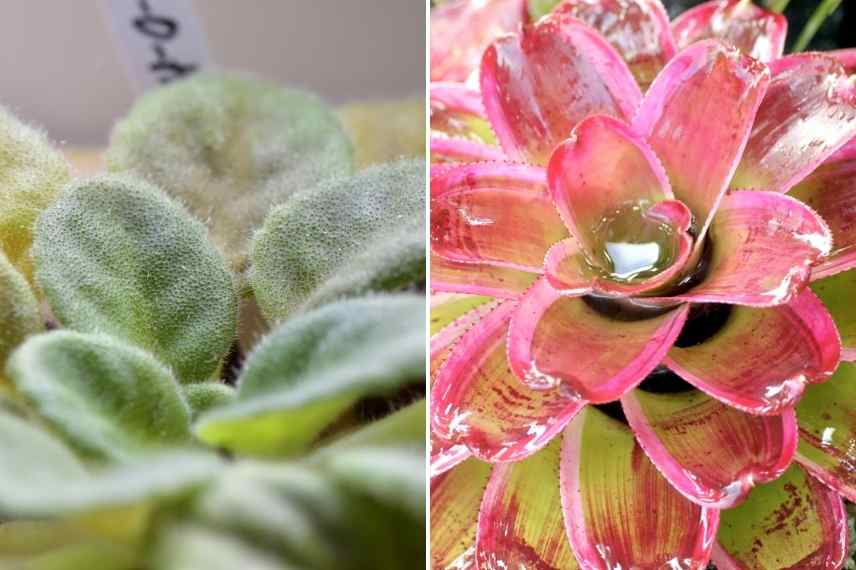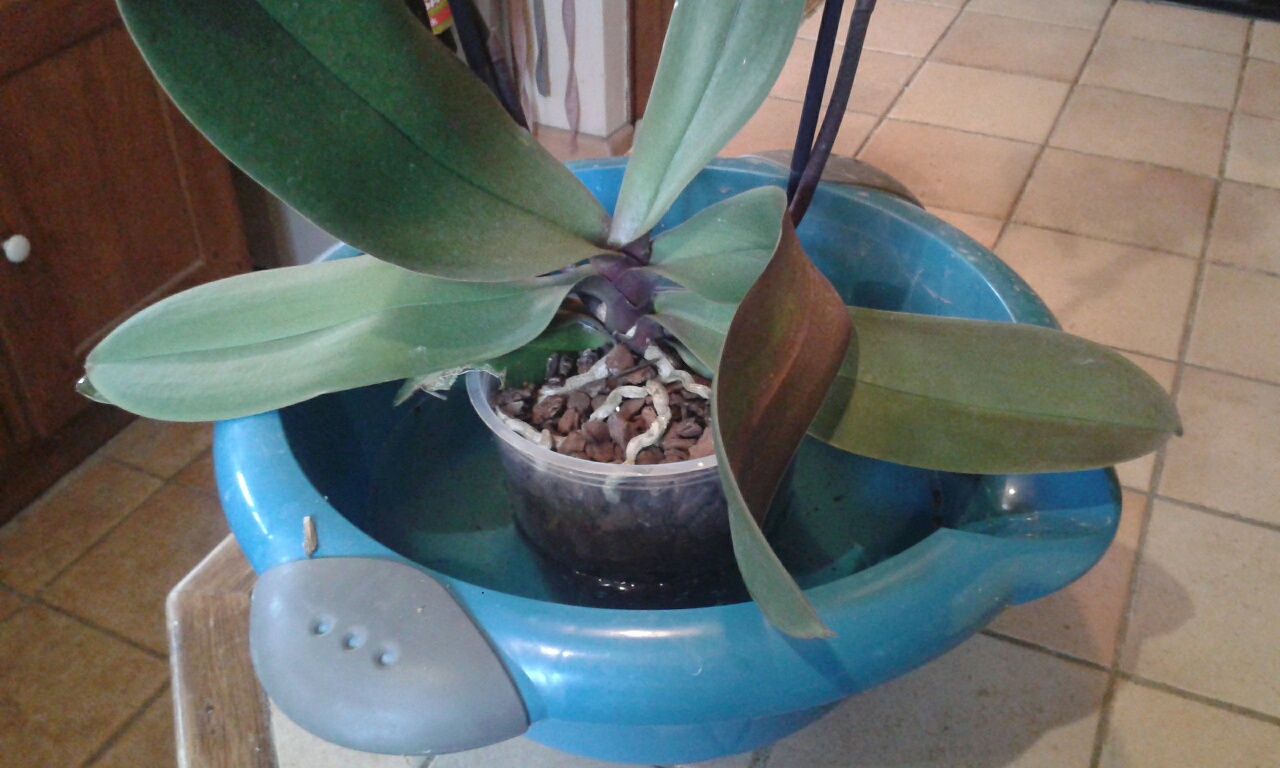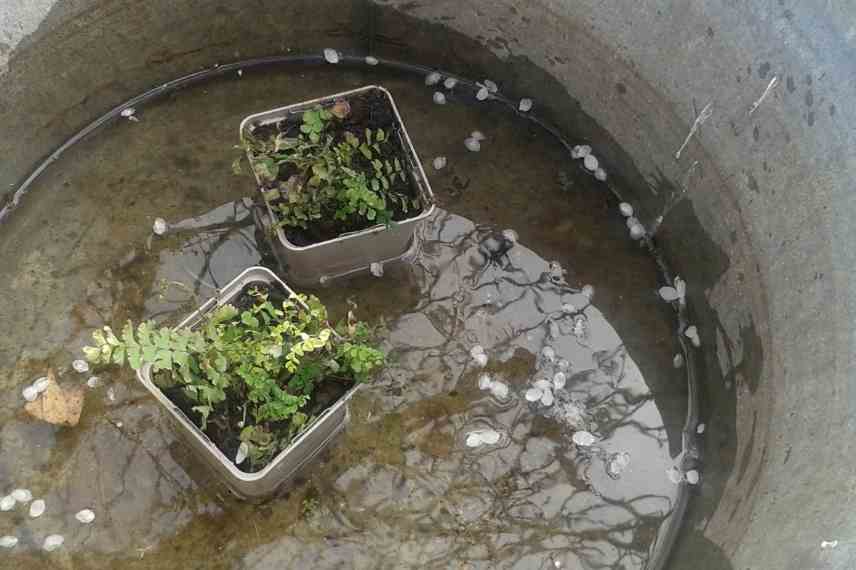
To bottom-water a plant
Humidify your plants perfectly without stressing them
Contents
People often talk about ‘bathing’ a plant in its pot for indoor plants. This technique is another way of watering and moistening your plants by giving them a sort of little bath. It is also essential when planting out. Discover when and how to soak a plant, the correct techniques and which plants benefit.

What is "bottom watering"?
The associated French term, ‘bassinage’ dates from the 17th century when, in medicine, it meant lightly moistening a wound. The word later moved into the plant world to refer to misting the aerial parts of a plant. However, the term has evolved, and nowadays to bottom-water is often used to mean to moisten a root ball without touching its foliage. It is therefore a delicate watering that occurs not from top to bottom of the root ball, but from bottom to top, soaking the roots with water at their base. Using a basin, a sink, or a large deep container, you then irrigate the substrate particularly effectively, because it is by capillary action that the root ball will absorb water. This type of watering is very effective, because it does not act superficially as can sometimes happen with watering carried out too quickly. Soil is moistened in a very homogeneous way by the end of bottom-watering.
Read also
Watering the garden: how to do it?For which plants?
In general, plants are watered when sensitive to stagnant moisture on their foliage or at the plant’s centre, or when planting :
- Indoor plants dislike watering on their foliage, often arranged in rosettes, or in a sheathing manner: bromeliads (such as Guzmania), with rigid foliage for example, will retain water in the centre of the plant, risking rot especially in winter. Orchids, epiphytes that in their natural habitat live attached to trees, are also not fans of conventional watering which can cause water to pool between their broad leaves. Plants with fuzzy leaves such as Saintpaulia will not be satisfied with rehydration by misting their moisture-sensitive leaves.

Fuzzy foliage (Saintpaulia) and sheathing of a bromeliad
- When planting in the ground: planting buckets or any plant in a larger container (perennial, bush, tree) to place in the garden should be watered thoroughly just before planting in order to provide the roots with the moisture necessary for their development. This ensures good establishment. Indeed, watering once the plant is in the ground is not enough if the substrate has remained dry, which unfortunately sometimes happens with plants that are not planted immediately after purchase, or in summer when the soil dries faster in small buckets in particular.
When and how to proceed?
Keep the plant in its pot, it’s the container (often plastic) fitted with drainage holes in its base that will act as a barrier.
Make sure you have water at room temperature to hand. This is all the more important in winter so as not to stress the plant. If you can collect rainwater, ideal — it’s much less hard and particularly suitable for your orchids. (N.B.: Keep this principle in mind for misting your indoor plants too.)
Have a basin to hand, it’s a perfect container when planting in the garden, or use your sink for indoor plants, which allows you to place several buckets or small plants. The water should reach halfway up the pot, which is sufficient.

Bottom-watering an orchid
Soaking time depends on size of your pot, but generally about ten minutes is enough to properly rehydrate a small plant. Test the surface moisture with your finger to check it has soaked through to the top of the bucket or the plant. Leave it to soak longer if the substrate remains dry on the surface. For orchids, leave at least 15 minutes, as their substrate is not soil but a mixture of bark, which takes a little longer to absorb water.
Then drain your pot, this is almost the most important step; there must be no more drops running from the pot. Put your indoor plant back into its cachepot, which is fitted with clay balls or small pebbles. Carry out another soaking as soon as the substrate is thoroughly dry (this really varies according to your indoor plants, but in general, like heating for them: better less than too much!)
If planting in open ground, plant your plant directly in place once the planting hole is made and the roots are gently loosened by hand when they tend to become pot-bound, to ensure better establishment. Bring soil back around, firm well and … wait for your plant to fulfil its best promises!

- Subscribe!
- Contents
































Comments